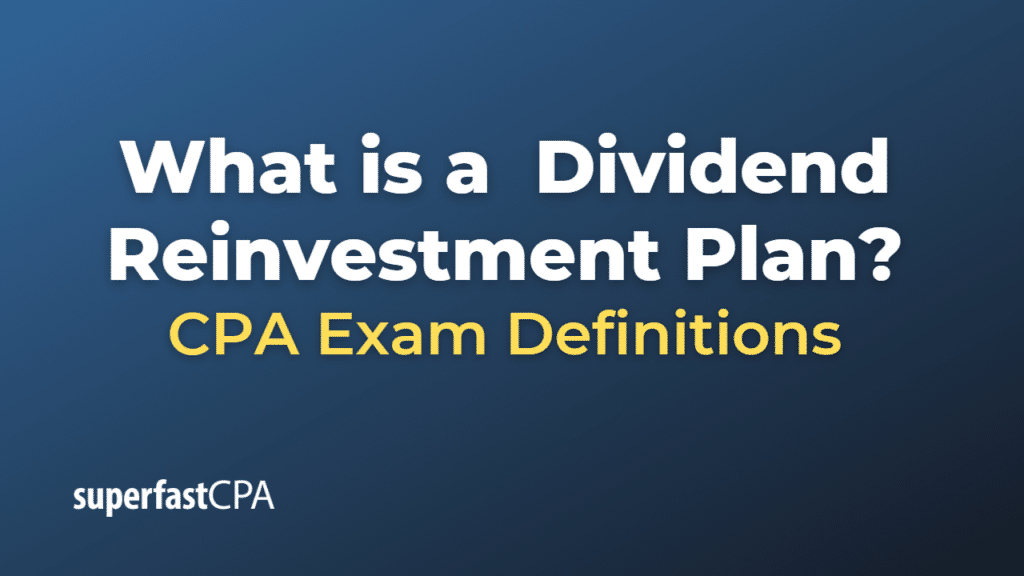Dividend Reinvestment Plan
A Dividend Reinvestment Plan, often abbreviated as DRIP, is a program offered by many corporations that allows investors to reinvest their cash dividends into additional shares or fractional shares of the underlying stock on the dividend payment date.
Here’s a more detailed explanation:
When a corporation earns a profit, one way it can choose to distribute this profit is through dividends, which are payments made to shareholders. Shareholders can use these dividends as income, or they can choose to reinvest them back into the company by buying more shares.
In a Dividend Reinvestment Plan:
- An investor does not receive their dividends in cash. Instead, these dividends are automatically used to purchase more shares of the company’s stock.
- The shares are usually bought from the company itself, without the investor incurring any brokerage fees or transaction costs. In addition, the company may offer the shares at a slight discount to the market price.
- Because the dividends buy more shares, those new shares then generate their own dividends, which buy even more shares, and so on. This can lead to compounding growth in both the number of shares owned and the total value of the investment.
It’s a popular tool for investors who prefer to gradually grow their stake in a company over time, rather than trying to time the market. However, like all investment strategies, it carries its own risks and may not be suitable for everyone. Investors should also remember that the tax implications of reinvested dividends can be complex, so they should seek advice from a qualified professional when necessary.
Example of a Dividend Reinvestment Plan
Let’s say you own 100 shares of Company XYZ, and the company pays an annual dividend of $1 per share.
Without a Dividend Reinvestment Plan (DRIP): At the end of the year, you would receive $100 in cash dividends (100 shares * $1/share).
With a Dividend Reinvestment Plan (DRIP): Instead of receiving the $100 in cash, you choose to enroll in the company’s DRIP. Let’s say the stock is currently priced at $20 per share. Your $100 in dividends would be used to purchase 5 additional shares of the company’s stock ($100/$20 per share).
Now you own 105 shares of Company XYZ. Next year, if the company again declares a $1 per share dividend, you would receive $105 in dividends instead of $100 because you now have more shares.
Over time, this can lead to the compounding growth of both the number of shares you own and the total value of your investment. This is a simplified example, but it demonstrates the basic concept of a DRIP.
Keep in mind that share prices fluctuate, companies can change their dividend policies, and various factors can impact the amount of dividends a company can pay out, so the actual calculations in a real-world scenario may be more complex.













